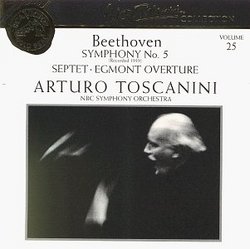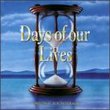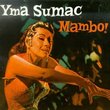| All Artists: Beethoven, Toscanini, NBC Title: Symphony 5 / Egmont Overture Members Wishing: 0 Total Copies: 0 Label: RCA Release Date: 5/12/1992 Genre: Classical Styles: Chamber Music, Historical Periods, Classical (c.1770-1830), Modern, 20th, & 21st Century, Symphonies Number of Discs: 1 SwapaCD Credits: 1 UPC: 090266027026 |
Search - Beethoven, Toscanini, NBC :: Symphony 5 / Egmont Overture
 | Beethoven, Toscanini, NBC Symphony 5 / Egmont Overture Genre: Classical
|
Larger Image |
CD DetailsSimilar CDs
Similarly Requested CDs
|
CD ReviewsEssential for Any Beethovenian (except for Furtwaenglerians) 07/18/1999 (5 out of 5 stars) "The "Toscanini underground" collectors had a variety of versions of the Fifth Symphony, ranging from the acoustical disk of the early 1920's (an excerpt of the finale, now available on a BMG CD), the unissued NYP broadcasts of '31 (now on Pearl), '33 (on Pearl and Naxos Historical), as well as many live NBC broadcasts up to the 1952 telecast. Most of those are now available on CD and, of them, this 1939 authorized and "approved" official Victor recording is possibly the most precisely conducted edition. Here, we have the utmost example of the famed Toscanini attention to the structural character of sonata-form, flowing scansion of long-lined phrasing, and careful attention to details of score markings, including rests and exact note values. The NBC Symphony players seem almost bursting with youthful energy; and so does the conductor, who was but a "young man" of around seventy! In his 1952 telecast (on BMG Gold Seal and Red Seal CD's) there is a falling off: less precision is evident, there are "clams" and slight blunders, and the reading is not shaped with as convincing a sense of inevitability. As I said in the caption, Furtwaenglerians will NOT be persuaded, and will prefer the German conductor's interesting personalisations, based on a probing analysis of the architectural structure of the piece. With Toscanini, however, we have passion driven by instinct, and an almost scientific precision of literalism.To appreciate all of the virtues of the '39 rendering, one has to accept a slight diminution in sound fidelity. The recording -- in the somewhat dry acoustic of Studio 8H -- has a very wide dynamic range (for a 78 source), but there is a sustained background hiss (that has NOT been covered up by Cedar processing, thank goodness!) and one finds in close comparisons, that the pitch is slightly off: odd for a transfer by the redoubtable Ward Marston. It is a few Hertz flat, more resembling the pitch of Hogwood's "period reconstruction" than the correct A=440 reference used by the NBC Symphony.Yet, for its slight defects, the recording now redeems the Victor original, which has never sounded as satisfying in either the 78 shellac release, or in the earlier Victor "Vault Treasures" LP (which had a defacing echo applied.)The Septet recording, made in Carnegie Hall in the early fifties, is much "creamier" and is palpably more "high fidelity" and is thus much easier on the ears. Yet, there is a slightly artificial and routine nature of contrivance to this reading, compared to the natural spontaneity of the live 1939 broadcast (issued on Relief and Naxos Historical, both hard -- if not impossible -- to obtain from US dealers.) Were it not for the possibility of obtaining the earlier version, this commercial recording session would obtain the highest possible recommendation. If one enjoys the charming Septet in the composer's original instrumentation, then it is likely that the intense yet nuanced Toscanini orchestral rendering, done in good taste despite its inauthenticity, will provide great listening pleasure.The January 19, 1953 Carnegie Hall recording session that provided the "Egmont" overture performance was not as successful in capturing a sense of inevitability and spontaneity as the live concert of 1939 (issued in BMG's Toscanini Collection, Vol. 45, or in the Naxos Historical series.) This 1953 edition includes a take of the coda that is different from the earlier fifties's Victor LP ('Toscanini Plays Your Favorites', LM-1834): there is a noticeable difference in phrasing, and the "authentic" approved take did not have a 'Luftpause' that is noticeable here; one wonders why the change was effected (did the original tape deteriorate?) Even so, this is a tumultuous reading, if not the "ultimate" Toscanini performance of the piece."
|

 Track Listings (16) - Disc #1
Track Listings (16) - Disc #1








